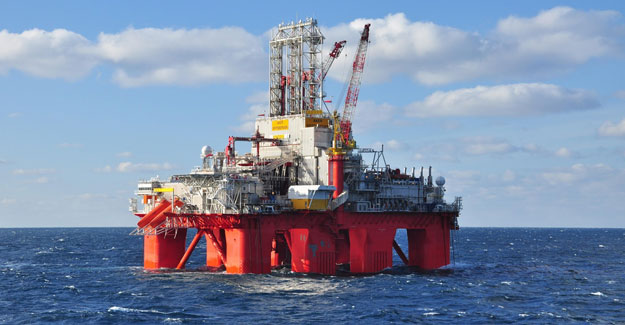APPEC: Asia's Appetite, Policy In Focus As World Set To Get Tougher On Russian Oil
- China's slowing growth to keep Asian oil demand growth subdued
- APPEC delegates debate G7 nations crude price cap policy options
- Oil set for a volatile period ahead as trade flows set to change
Asia's appetite for discounted Russian oil is unlikely to ease soon as buyers scout around for attractively-priced barrels, but uncertainty surrounding EU trade policies as well as questions on China's appetite recovery will keep the markets guessing on volumes well into 2023, speakers and delegates at APPEC by S&P Global Commodity Insights said.
As Russia's recent declaration of a partial mobilisation and plans for occupied areas of Ukraine to hold referenda on joining Russia have raised the risk that Western countries will introduce harsher sanctions, delegates said all eyes are on whether more Russian oil gets diverted to Asia.
"We will definitely buy Russian crudes as they are so cheap. But the wave of procurement ahead of December 5 is unlikely to be big due to a strong US dollar and uncertainties around the price policy," a senior official with a Chinese state-owned trading house said.
China's crude imports from Russia have continued to stay elevated through 2022, averaging at 1.71 million b/d over January-August, or 7.3% higher than in the same period in 2021, according to the country's customs data.
Pomila Jaspal, finance director at state-run ONGC, said India was not only buying Russian oil since it was offered at attractive discounts, it was also engaging with the government to find out how to bring back equity oil from the non- OPEC supplier. "We are buying Russian oil as well as cargoes from other suppliers from where we can get at competitive prices," she added.
According to S&P Global, India imported close to 950,000 b/d of Russian crude in July, compared with 970,000 b/d in June. The share of Russian crudes has stabilised to about 18%-20% in last three months.
Policy details
As delegates at APPEC weighed the outlook for Russian crude appetite from India and China, US Treasury deputy assistant secretary Catherine Wolfram told S&P Global during the conference that G7 nations were keen to finalise a price cap on Russian crude some 30-45 days ahead of December 5 - the date the cap is meant to take effect. The G7 is considering the pre-Covid price as one of the factors in deciding what the level should be, he added.
"Russia really faces three choices. One, they can sell at or below the price cap and use G7 and other services. Or two, they can try to find alternatives, they can use their own insurance, they can use their own shipping, Chinese shipping, for instance, and three, they could refuse to sell," Wolfram said during an APPEC panel discussion.
Russian crudes had initially been replacing long haul crudes from West Africa and North America but have now started replacing some of the Middle Eastern crudes as well.
"There's a crucial import ban that starts on December 5 for Europe, and then there's a product import ban that starts on February 5. So if nothing else changes, then what that means is that Russian oil would need to find a home that isn't the UK, the US or the EU. It's going to go further and longer distances and find different markets and for doing that, it will have to trade at a discount," Vitol CEO Russell Hardy told the conference.
'Calm before the storm'
Crude futures finished a volatile session lower Sept. 26 as oil outlooks dimmed amid brewing economic headwinds and a stronger US dollar.
Based on the latest September outlook by S&P Global, Asian oil demand growth this year has been revised down by some 980,000 b/d from the end-January outlook, with China demand destruction accounting for 87% of the downward adjustment as Beijing sticks to its "dynamic-zero" Covid policy. For now, China's oil demand is expected to contract by 305,000 b/d in 2022, before rising by 485,000 b/d in 2023.
"In Asia, it's really about China's zero-Covid policy," said Paul Gruenwald, global chief economist at S&P Global Ratings.
Other than China and India, Japan has practically put an end to Russian crude purchases, but Tokyo is keen to maintain its rightful ownership and equity share in the Far East Russia's Sakhalin upstream projects, market analysts at a Japanese integrated trading company told S&P Global on the sidelines of the APPEC conference.
Japanese consortium Sakhalin Oil and Gas Development Co. has a 30% stake in Sakhalin 1. Japanese government officials have indicated that the country wants to retain its stake in the project. Crude produced at Sakhalin 1 is a medium sweet grade marketed as Sokol.
The Russian government has already approved Japanese partners retaining their stakes in the Sakhalin 2 project, where light sweet Sakhalin Blend crude is produced from the Molikpaq production platform. Mitsui continues to hold a 12.5% stake and Mitsubishi a 10% stake in the project.
Japan recorded its first intake of Russian crude oil in three months in August as Taiyo Oil discharged 647,849 barrels of Sakhalin Blend crude from its bonded storage in Japan.
Textile Excellence
Previous News
pakistan’s constrained supplies drive 2022/23 consumption lower
Next News
asia to lead the global pta capacity additions by 2026









